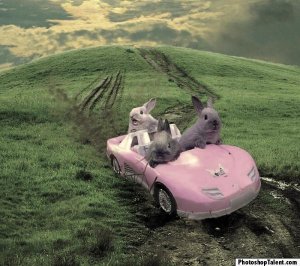Most times when photographers shoot pictures, they work hard to get the exposure correct so that their images reflects what they saw in real life. At times, though, I deliberately over or underexpose for effect. In an earlier post, Creating Blackgrounds, I discussed how to use underexposure to create dramatic black backgrounds. Similarly, you can use overexposure to create other specific effects.
For example, overexposure can create a light, dreamy, impressionistic atmosphere. Edges blur, colors soften, and a light background fades to white. The subject is enveloped by light.
The tulips here look soft and delicate, even though their petals and leaves are firm. The pastel colors suggest spring, new growth, and freshness. A different exposure might have captured the shapes more clearly, but the effect would have been totally different.

















